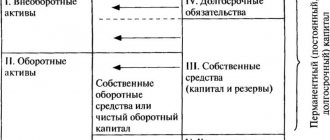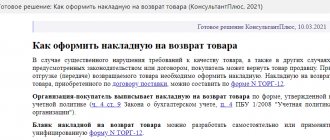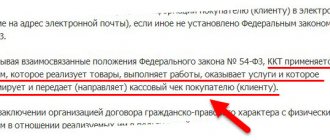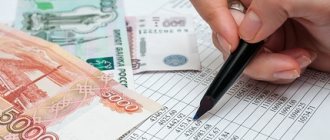Author: Cherikov and partners 04/26/2016 Taxes in Kyrgyzstan Leave a comment
In this short article we will try to explain to you in simple language what VAT is and how it is calculated in Kyrgyzstan.
For clarity, let's take an example from life. Two friends (let's call them Azamat and Alexander) decided to start a business selling and servicing office equipment. The guys registered an LLC, rented premises and began calling organizations with offers of cooperation. Since the guys’ prices were much lower than their competitors’, most organizations agreed to work with them. And in just six months, their total revenue reached 9 million soms !
Table and ranking of the TOP 10 countries with the highest VAT level
| Place | A country | VAT rate |
| 1 | Hungary | 27 % |
| 2 | Denmark | 25 % |
| Norway | ||
| Sweden | ||
| 3 | Iceland | 24,5 % |
| 4 | Finland | 24 % |
| Greece | ||
| 5 | Poland | 23 % |
| Portugal | ||
| Ireland | ||
| Uruguay | ||
| 6 | Slovenia | 22 % |
| Croatia | ||
| Italy | ||
| 7 | Latvia | 21 % |
| Lithuania | ||
| Czech | ||
| Argentina | ||
| Belgium | ||
| Spain | ||
| 8 | Russia | 20 % |
| Austria | ||
| Moldova | ||
| Armenia | ||
| Ukraine | ||
| Albania | ||
| Bulgaria | ||
| Estonia | ||
| France | ||
| Slovakia | ||
| Great Britain | ||
| Uzbekistan | ||
| 9 | Germany | 19 % |
| Cyprus | ||
| Romania | ||
| Chile | ||
| 10 | Malta | 18 % |
Forms of business in Kyrgyzstan
According to the State Classifier of Organizational and Legal Forms of Business Entities (GKOPF), the following are distinguished:
The authorized capital of an LLC can be 1 som (0.84 Russian rubles). The authorized capital of the JSC must be at least 100,000 soms (84,000 Russian rubles).
Individual entrepreneurs can operate on the basis of a state registration certificate or patent. The list of activities for which it is possible to obtain it can be found on the website of the State Tax Service under the Government of the Kyrgyz Republic.
Branches and representative offices of foreign legal entities, according to the law, are not recognized as such in the country. But they can:
- hire local residents as workers;
- open bank accounts and freely manage your own funds;
- hire personnel from abroad;
- enter into contractual relations with any counterparties;
- purchase and rent real estate.
The only restriction concerns obtaining licenses to carry out certain types of activities and provide services (a detailed list can be found on the licensees’ website).
Table comparing VAT and living standards in countries around the world
In the European Union, each state decides independently which VAT rate to use. And although there is no specific rule, there are still certain guidelines.
- Firstly, the rate should not be less than 15%.
- Secondly, there is a list of goods for which the rate is very low or zero.
This allows businessmen to choose an economically advantageous country to develop their own business.
There is no VAT as such in the USA, but their tax is somewhat reminiscent of the usual system. The views of Americans are conservative, but, as time shows, they are correct.
In Africa and the East, standard VAT applies. Culture and isolation allow regional states to have flexible views and smart economic policies.
Countries with the highest taxes in the world
Package of mandatory documents for EAEU reporting
As a mandatory component of VAT reporting, the Treaty on the EAEU (subclauses 2-8 of clause 20 of Section III of Appendix No. 18) provides for the submission of documents confirming the fact of payment of the accrued tax and the data included in the reporting:
- Bank statements or tax documents. They do not have to be submitted if the taxpayer has overpaid EAEU-VAT.
- Shipping documents. They may be absent in cases where their registration by the seller is not provided for by the legislation of his state.
- Invoices. They are needed if the seller issues them in accordance with the laws of his country.
- Supply agreement (leasing, trade credit, product manufacturing, processing).
- Information message issued in case of participation of three parties in the import procedure (during transit operations or intermediary transactions). It includes information about the third party to the transaction (his identification number, name, location, details of the agreement concluded with him, specification number and date). It is not mandatory if all the necessary information is specified in the supply agreement (leasing, trade credit, product manufacturing, processing).
- Mediation agreement, if any.
- Agreement for the purchase of goods purchased by a third party to the delivery. It is needed when there is a third party and taxes are paid by the end buyer, not the intermediary.
Thus, the set of supporting documents may vary depending on the specific situation surrounding the delivery. But in any case, he must provide the necessary information about the data included in the application and, accordingly, in the declaration.
Supporting documents can be submitted to the Federal Tax Service both in the form of certified paper copies and in electronic form. Documents that are still valid do not need to be resubmitted.
Where value added tax does not apply
There is no VAT in the United States of America. The country's duties are lower than the VAT of most wealthy world powers. The new system seems too complex and incomprehensible to the country.
Rich Arab countries with enormous resources cope well without VAT: Oman, Kuwait, Bahrain, Qatar.
The following islands also do not have rates: Cayman, Bermuda, Bahamas. At the same time, they do not live completely without taxes. There is a duty of about 70% on imported goods.
Lowest taxes in the world
The procedure for calculating “import” VAT
The procedure for calculating and paying VAT between business entities of the EAEU member states is carried out in accordance with the Protocol on the procedure for collecting indirect taxes and the mechanism for monitoring their payment when exporting and importing goods, performing work, providing services (hereinafter referred to as the Protocol), which is Appendix No. 18 to Agreement. Moreover, in accordance with paragraph 4 of Art. 72 of this Treaty, when goods are imported into the territory of one EAEU member state from the territory of another EAEU member state, VAT is levied by the tax authorities of the EAEU member state into whose territory the goods are imported.
The tax base for “import” VAT is determined on the date of acceptance of imported goods for accounting by a Russian organization, i.e. if goods are purchased for further resale, the tax base will be determined on the date they are reflected in account 41 “Goods”. The tax base is determined based on the cost of purchased goods and excise taxes payable on excisable goods.
ACCOUNTING OF FOREIGN TRADE ACTIVITIES
In this case, the cost of purchased goods, including those resulting from the performance of work under an agreement (contract) for their production, is the transaction price payable to the supplier for the goods (work, services) in accordance with the terms of the agreement (contract).
“Import” VAT must be paid before filing a tax return for indirect taxes, since the document confirming its payment is submitted to the tax authorities as part of a supporting package of documents simultaneously with the declaration. Thus, “import” VAT is paid to the tax authorities (at the place of registration of the taxpayer) no later than the 20th day of the month following the month in which these goods were registered.
In accordance with clause 26 of the Protocol, the amounts of VAT paid (offset) on goods imported into the territory of one EAEU member state from the territory of another EAEU member state are subject to deductions (offsets) in the manner prescribed by the legislation of the EAEU member state to the territory from which the goods are imported.
Thus, the deduction of VAT amounts paid (credited) on goods imported into the territory of the Russian Federation from the territory of a member state of the EAEU is carried out in the manner prescribed by the legislation of the Russian Federation on taxes and fees.
VAT rate in EU countries
In 2021, the maximum VAT level was recorded in Italy and amounted to 22%. In 2013 the figure was 21%. But this only applies to countries that are members of the G20 - the Big Twenty.
Among the states that are not included in this number, Greece and Hungary stand out for their huge interest rates: 24 and 27%, respectively.
The figures from the northern states are impressive:
- VAT in Denmark - 25%,
- VAT in Finland - 24%,
- VAT in Norway - 25%,
- VAT in Sweden is 25%.
The standard rate for Europe is 20–22%.
- VAT in Austria and the UK is 20%,
- VAT in the Netherlands and Belgium is 22%.
VAT in Latvia and VAT in Lithuania - 20%. But there are additional preferential options in the Republic of Latvia. Some areas are subject to a tax rate of 12%, 5% or no tax.
VAT in Estonia is 20%, but there is a preferential rate of 9%. The latter concerns such areas as pharmacology, medicine, and printed materials. Estonia does not tax some types of transport at all.
VAT and average salary in the EU and Russia
Registration threshold
And here the first surprise awaited the guys.
Azamat’s acquaintance, an accountant by training, told him that tax legislation established the so-called registration threshold for value added tax in the amount of 8 million soms (Article 229 of the Tax Code of the Kyrgyz Republic). And taxpayers whose income for any 12-month period exceeds this threshold become payers of this tax. And since the guys’ revenue already in the first 6 months exceeded the specified amount, they automatically fell under this rule.
This is how the guys learned about the VAT registration threshold and became payers of this tax.
Russia
In the Russian Federation, VAT is 20%. This is quite a lot, but benefits are actively used in the country.
For the following groups of goods a rate of 10% is applied: meat and dairy products, seafood and vegetables.
In addition, the zero rate is used infrequently.
This primarily concerns export procedures and international transportation in the field of oil production. The VAT increase was forced by the difficult economic situation that arose as a result of falling oil prices.
Now Russia is striving to depend less on the once profitable sector and has begun to develop more transport, communications, services and information technology.
Taxpayers
Entrepreneurs are required to pay for their activities and make contributions to the Uzbek budget:
- Selling agricultural products. Self-produced products are an exception.
- Providing brokerage services.
- Providing auditor services.
- Providing consulting services.
- Those involved in catering.
- Those involved in hotel management.
- Carrying out trade (wholesale-retail, wholesale, retail).
- Those involved in construction.
We recommend watching the webinar on taxation in Uzbekistan in 2021.
Asia
In Thailand, VAT is 7% and includes all goods and invoices in food establishments. In this country, a tourist can subsequently count on a tax refund for purchases at special points.
There is no VAT in Malaysia. Corporation tax applies at a standard rate of 28%, but relief is available on many items.
Singapore impresses with a low rate of 5%. In India, VAT is 4-5%, but only major groups of goods are taxed.
China in 2021 reduced VAT by one percent - from 17% to 16%.
In South Africa the rate is 15%, in South Korea and Indonesia - 10%.
Total taxes in different countries
VAT on imports
At some point, the guys realized that if they themselves imported goods from China, rather than purchasing them from local warehouses, their net profit would increase significantly. Knowing English well, they quickly found a supplier in China via the Internet and contacted him. They managed to reach an agreement and the supplier sent them the first batch of goods.
And then another surprise awaited the guys - VAT on imports. It turns out that when importing goods into the Kyrgyz Republic, you also need to pay VAT (Article 231 of the Tax Code). Moreover, regardless of whether you are a VAT payer or not (Article 226 of the Tax Code).
The good news is that if you are a VAT payer, then you have the right to offset this VAT on imports (Article 270 of the Tax Code). Exactly the same as if you purchased goods from a local supplier who pays VAT (see “Credit” above).
Thus, the taxable value of the goods imported by the guys (including all customs duties) amounted to 1 million soms and they paid VAT on imports at customs in the amount of 120 thousand soms (1,000,000 * 12%). Then they sold all the goods in Kyrgyzstan for 3 million soms and their “outgoing” VAT amounted to 360 thousand soms (3,000,000 * 12%), respectively. As a result, they must pay 240 thousand soms of the difference (360,000-120,000) to the budget.
So the guys learned not only about VAT on imports, but also generally understood this tax.
The relationship between VAT level and quality of life
VAT is paid by consumers, ordinary people, since it is included in the price of the product. It is charged from production itself and is a guideline for determining the markup on sales. In essence, what the seller overcharges is returned by the taxpayer as VAT.
Thus, funds go to the state budget. However, the high level of VAT indicates the difficult economic situation in the country.
In most cases, this tax does not reflect real life in a particular country.
Test
The next month the guys were going to submit tax reports and pay value added tax. As you remember, it amounted to 120 thousand soms . But then Azamat’s same friend (an accountant) appeared again, who explained to him that if he purchased these goods from a supplier who is also a value added tax payer, then he does not have to pay the entire 120 thousand soms of tax.
The fact is that the supplier sold the above goods to the guys for 900 thousand soms and charged them value added tax in the amount of 108 thousand soms (900,000 * 12%). This is confirmed by the VAT invoice received from this supplier. Based on this invoice, the guys can count the indicated 108 thousand soms towards the payment of their 120 thousand soms and ultimately pay only 12 thousand soms of the difference to the budget.
This is how the guys learned that they do not need to pay the entire VAT that they charge to clients, but only the difference between the “output” and “input” tax. This is called VAT offset (Article 270 of the Tax Code).
Buy a ready-made business
There are several ways to become the owner of an operating enterprise in Kyrgyzstan:
- discover something new;
- buy ready-made;
- open a branch or representative office;
- make investments;
- participate in the privatization of state facilities. But for this it is imperative to provide a detailed business plan for the further development of the company. The list of objects can be found on the website of the Ministry of Justice. The privatization program for 2015-2017 included BTA-Bank CJSC, Alfa Telecom CJSC, and Kyrgyzstan Airline OJSC.
The simplest way is to purchase an existing business. The largest and most serious platform is kg.bizmast.ru. On it you can sell, buy, evaluate a business, conduct an audit and receive legal support. On multidisciplinary resources (flagma-kg.com, bazarmazar.kg, stroga.kg) there are many offers (from websites and patents to large operating businesses). Ready-made companies or trademarks are sold on desko.kg. The profile portal lalafo.kg contains many advertisements, including for large investors. On business-asset.com, in addition to business, you can become the owner of equipment, commercial real estate, a franchise, and even select highly qualified specialists.
In their activities, foreigners doing business in the Kyrgyz Republic must rely on the Tax, Civil, Land and Customs Codes of the Kyrgyz Republic. The following laws are fundamental:
- “On state registration of legal entities”;
- “On free economic zones in the Kyrgyz Republic”;
- “On licensing”;
- “On investments in the Kyrgyz Republic”;
- “On public-private partnership”;
- “On joint stock companies”;
- “On business partnerships and societies”;
- “On securities”;
- “About the subsoil”;
- “On the protection of the rights of entrepreneurs.”
Promising areas of business in Kyrgyzstan
It’s difficult to say which business is the most profitable. The market conditions are contrasting and changing rapidly. Local experts believe that the most promising option is the production of goods for export (clothing products, meat and dairy industry, dried fruits, nuts and honey). This will create a stable medium-sized business. The trade sector will always remain relevant. But after joining the EAEU, a number of problems arose due to the introduction of customs duties with China. It is advisable to pay attention to the hospitality sector. Recreational resources make it possible to develop any type of tourism - gastronomic, cultural, health, active (hiking, fishing, hunting, outdoor recreation).
- There are all conditions for processing agricultural products and livestock farming. A win-win option is to grow early vegetables and fruits (especially greenhouse ones) and send them for export. In fact, the agricultural industry is currently highly fragmented. Farmers within the same region are not connected to each other in any way. All activities come down to two points - growing and selling. Processing, pre-sale preparation: sizing, packaging, washing, sorting, and logistics are completely undeveloped. And those manufacturers who follow the path of a full production cycle will have significant advantages over their competitors.
The service sector is actively developing - repair of cars, clothing and cell phones. Computer, language and other educational courses and trainings are very popular among the local population. Large investors can turn their attention to small hydroelectric power plants. Previously there were about 1,500 of them, but now there are only a few left. Investments from several hundred to a million dollars will pay off within 2-3 years.
- Construction has ceased to be profitable. The food industry has also become a high-risk business. The mining industry remains the most problematic due to problems with the local population.
To summarize, we can say that Kyrgyzstan is one of the most promising states in the entire post-Soviet space for doing business. The country has one of the most liberal laws in the entire post-Soviet space. Special tax regimes apply in the territories of SEZs and technology parks. In recent years, much has been done for the comprehensive development of small and medium-sized businesses. There is huge potential to create economically favorable soil. Officials intend to promote the “Made in Kyrgyzstan” brand on the international stage.









